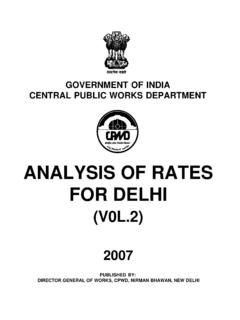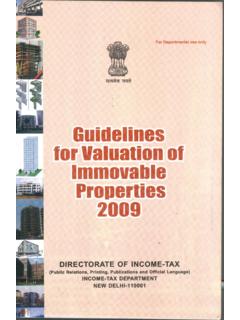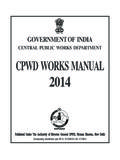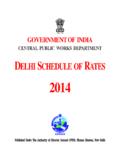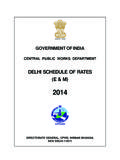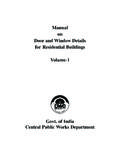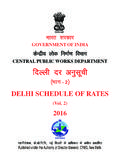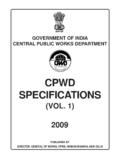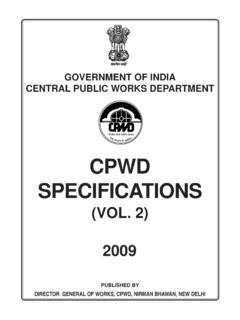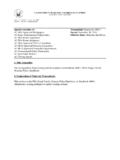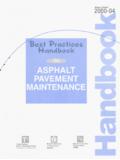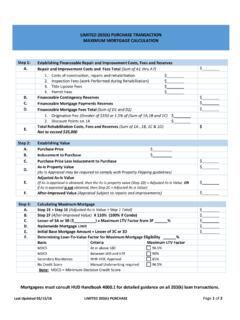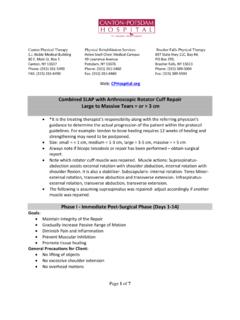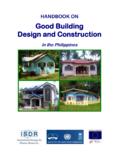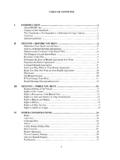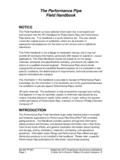Transcription of HANDBOOK ON REPAIR AND REHABILITATION OF …
1 HANDBOOK ONREPAIR AND REHABILITATIONOFRCC BUILDINGSPUBLISHED BYDIRECTOR GENERAL (WORKS),CENTRAL PUBLIC WORKS DEPARTMENT,GOVERNMENT OF INDIA, NIRMAN HANDBOOK on Repairs and REHABILITATION of RCC Buildings Copyright by Director General Works {DG(W)},Central Public Works Department (CPWD) ,Government of India, New , its authors, editors and engineers, apply diligence and judgment in locating and using reliable sourcesfor information published, practices and beliefs. However, CPWD makes no express or implied warranty or guaranteein connection with the content of the information contained herein, including the accuracy, correctness, value,sufficiency, or completeness of the data, methods and other information contained herein. CPWD makes no expressor implied warranty of merchantability or fitness of a particular purpose.
2 CPWD shall have no liability to any customeror third party for any loss, expense, or damage including consequential, incidental, special or punitive damages,including lost profits or lost revenue, caused directly or indirectly by any error or omission, or arising out of, or inconnection with, the information contained rights part of this publication can be reproduced, stored in a retrieval system, or transmitted in any form or by anymeans without written permission DG (W), published in 2002 Published by :Director General Works {DG(W)}, Central Public Works Department (CPWD),Government of India, New book Printed in IndiaAt Government of India Press, Mayapuri, New DelhiThe CD containing the Electronic version of the book has been created byKshitiz Enterprises, New Delhi-110049Ph: 91+11+4624018 e-mail : with a glorious history of more than 100 years in the field of built environment, is playinga lead role in our country in dissemination of knowledge relating to practices in building industry forengineering profession.
3 It is actively involved in the development of infrastructure for the country and hasto its credit successful completion of a large number of prestigious projects including bridges, flyovers,airports, roads and other buildings of national importance. CPWD publications are being used profuselyby both public and private sector and they are reckoned as standard engineering practices. A vastnumber of technical publications have been released for the benefit of engineering community. Some ofthese are:1)Manual on Planning and Design of Reinforced concrete multi-storeyed buildings Vol. Iand Vol. II. - 19762)Maintenance from Approach, Cause and Effect Study by Shri K S Narayanan3)A Report of Documentation on Fire, Assessment of Damages and REPAIR of Vigyan Bhawan,New Delhi - ) Guidelines and Space Standards for Barrier Free Built Environment for Disabled andElderly Persons, 19985)Manual on Rainwater Harvesting, 2002 Buildings and other structures have a certain useful life, which depends on the specifications large number of monuments, which are cherished heritage structures have stood well over a periodof time.
4 But some of these have shown signs of distress due to age, aggressive natural environment/industrial pollution etc. Further, distress gets aggravated due to overloading/ misuse of buildings. A fewbuildings have also failed due to faulty design / construction. Thus, Repairs & REHABILITATION of buildingsare of vital importance. The experiences gained by CPWD and other organisations in Repairs & REHABILITATION of RCC Buildings are presented in this HANDBOOK . A panel of experts drawn from gov-ernment departments, scientists, research organisations and consultants has ensured that the handbookwill provide expert guidance in REPAIR & REHABILITATION work. An attempt has been made to compre-hensively cover all aspects related to REPAIR , REHABILITATION and strengthening of RCC buildings at oneplace. I am sure this HANDBOOK will serve as a ready reference guide to all practicing civil engineers,academicians and initiative and efforts of Shri A K Sharma, Superintending Engineer and his team in Repairs & REHABILITATION Unit under the guidance of Dr , ADG (Training) & Shri R Subramanian,Chief Engineers of CDO are commended.
5 I express my appreciation for Shri S. L. Karunakaran,Chairman and all members of the Expert Committee for their valuable contribution in bringing out thishandbook, which is first of its kind dealing with the vital area of REPAIR & REHABILITATION . (ER. KRISHAN KUMAR),Director General (Works)CPWD, Govt. of COMMITTEEC hairman: Shri S L Karunakaran, Consultant to Govt of India and ADG(Retd.),Central Public Works Department, New DelhiMember Secretary: Shri A K Sharma, Superintending Engineer, Repairs & REHABILITATION Unit, CentralDesign Organisation, Central Public works Department, New C Rajkumar, Advisor, National Council of Cement and building Materials, K Mani, Scientist, Structural Engineering Research Centre, L K Aggarwal, Head, OBM Division, Central building Research Institute, N S Rengaswamy, Scientist(Retd), Central Electro-Chemical Research Institute, Karaikudi, S K Sharma, Superintending Engineer, Central Public Works Department, S Srinivasan, Scientist (Retd), Central Electro-Chemical Research Institute, Karaikudi, Yogendra Singh, Department of Earthquake Engineering, Indian Institute of Technology, A K Gupta, Chief Engineer(Civil)
6 , Department of Telecom, Mahanagar Telephone Nigam Ltd,New D S Sachdeva, Chief Engineer, Central Public Works Department, , Consultant, Engineering Development and Consultant, New J Bhattacharjee, Addl Chief Engineer, Military Engineering Service, Ministry ofDefence, New M A Jacob, Addl Director General (Retd), Central Public Works Department, P C Sharma, Scientist (Retd), Structural Engineering Research Centre, R N Raikar, Chairman & Managing Director, M/s Structwel Designers & Consultants Pvt Ltd, R Subramanian, Chief Engineer(D), Central Design Organisation, Central Public Works Depart-ment, N S P Banwait, Chief Engineer, Public Works Department, Govt of Delhi, New DelhiEDITORIAL COMMITTEEC hairman :Shri S L Karunakaran, Consultant to Govt of India and ADG (Retd.) Central Public WorksDepartment, New C Rajkumar, Advisor, National Council of Cement and building Materials, P C Sharma, Scientist (Retd.)
7 , Structural Engineering Research Centre, A K Sharma, Superintending Engineer, Repairs & REHABILITATION Unit, Central DesignOrganisation, Central Public works Department, New , Guidance and Support:Shri Krishan Kumar, Director General (Works); Dr A V Chaturvedi, Addl Director General(Training); Shri H K Munjal, Addl Director General (TD); Shri Deepak Narayan, Engineer-in-Chief, PWD, New & finalisation:Shri A K Sharma, Superintending Engineer, Repairs & REHABILITATION Unit, CDO, CPWD, Support:Dr V Thiruvengadam, Professor, School of Planning & Architecture, New Delhi;Shri Manoj K Sharma, Shri Bhagwan Singh, Shri Rajesh Khare, Shri Vasu Dev, Executive Engineers;Shri Manoj Kumar, Assistant Executive Engineer; Shri Naresh K Sharma, Shri Piyush K Singh,Shri M C Singhal, Assistant Engineers; Shri Sanjay Bose, Junior Engineer; Repairs & RehabilitationUnit, CPWD, New DelhiD.
8 Sketches:Shri Mukesh Kumar Sharma, Smt. Bimlesh Kumari Saxena, Draftsman, Repairs & RehabilitationUnit, CPWD, New DelhiD. Secretarial Assistance :Smt. Aanchal Arora, Stenographer and Ms Rajani Saxena, UDC, Repairs & REHABILITATION Unit,CPWD, New & Publication :Directorate of Printing M/o UD & PA Govt. of India1 Shri H. A. Yadav, (Director of Printing)2. Shri Sinha (Dy. Director of Printing)3. Shri Joginder Singh (Dy. Director of Printing)PREFACER einforced cement concrete (RCC) as a construction material has come into use for the last onecentury. In India, RCC has been used extensively in the last 50-60 years. During this period, we havecreated large number of infrastructural assets in terms of buildings, bridges, sports stadium etc., whichare lifeline for the civilized society. These have been created with huge investment of resources.
9 Wecannot even dream of recreating such assets out of limited national resources. It is, therefore, essential tomaintain them in functional condition. Since, deterioration of RCC is a natural phenomena and hasstarted exhibiting in large number of structures, a systematic approach is needed in dealing with suchproblems. Identification of the causes of deterioration and consequent REPAIR / REHABILITATION strategy atoptimum cost needs a scientific evaluation and has been observed that the deterioration phenomena of RCC is not realized by majority ofpractising civil engineers. As a result, the factors considered necessary for durability of RCC buildingsare many times not given due importance during construction and/or during maintenance. The durabilityprovisions have been given emphasis in the revised Code of Practice on Plain and Reinforced Con-crete (IS:456-2000).
10 In the international scenario also, deterioration of RCC had been drawing atten-tion of the practising civil engineers for quite some time. They have accordingly, made certain advance-ments in the field of protection, repairs, REHABILITATION , strengthening and retrofitting of the existing RCCstructures taking advantage of the advancement in the materials science, more particularly the polymerscience. The knowledge in this area among the Civil Engineers, in India is still at infancy stage and needsdevelopment and systematic dissemination. This HANDBOOK is a pioneering attempt with this objective is a leading organisation practising in construction and maintenance of buildings for over acentury. Having faced the problem of deterioration in RCC buildings under its maintenance, the need ofspecialised unit in the field of REPAIR , REHABILITATION and protection of existing buildings was felt and a unitwas created on 1/1/96.
